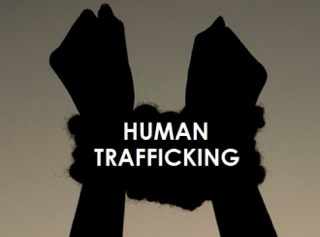Modern Day Human Trafficking
Human trafficking is the process of the
recruitment and enslavement of people that takes advantage of victims for
profit. It has many different divisions of work, including
forced labor, sexual exploitation, and child trafficking. The subdivision of
child trafficking includes forced labor, arranged marriages, and sexual
exploitation. Human trafficking has been around for a long time but some of the aspects changed. Modern day human trafficking occurs through
forced labor, sexual exploitation, and organ trafficking.
Within
forced labor, the most common jobs are manufacturing and factory jobs. Inside of forced labor, trafficking raises the issue of child labor and smuggling. A
study conducted by the International Labor Organization estimated that there
are 2 million children ages five through fourteen that unwillingly work in the
labor aspect of human trafficking. The same study also estimates
120 million victims work in dangerous and exploitative types of work. A majority of human trafficking cases in China are domestic and involve
trafficking for forced labor. Although labor victims work in less gruesome jobs
than prostitution victims, many labor victims face dangerous working conditions
and are often victims of sexual harassment and rape. Despite being
enslaved into this forced labor, the victims do not obtain the worst jobs in
human trafficking.
In
human trafficking some of the most ghastly jobs are in the sexual exploitation
industry. In 2005, Kathryn Farr, a reporter, stated that about 27 million
people all over the world live under a form of modern day slavery and a
majority of the victims are women and youth whom have been trafficked for
prostitution. An estimated 35,000 women from Columbia have been
trafficked, sold, and bought for sexual services around the world.
In Bangladesh 25,000 women have been trafficked, sold, and bought into the
sexual exploitation industry. Women in Nepal and India are
especially vulnerable to sexual exploitation because of their class. The
poverty-stricken, uneducated girls are most likely to become victims of sexual
labor. Sexual exploitation is rooted in low status and the positions of young
girls and women. In Nepal, under the “Deukis System”, wealthy
families are legally allowed to purchase young girls that are classified in the
bottom of the caste system. The females are treated like toys that
can be used for the owners’ pleasure and can even be borrowed by friends. These
victims cannot get married and with no education, often women cannot find
employment and are forced into prostitution. These torturous events
can eventually lead victims to sell their bodies on the black market.
Child trafficking is the recruitment, transportation, of a child fof exploitation. Many children are kidnapped from
their country of residence and transported abroad to another country.
Children are often targeted for criminal activity. The criminal activity
includes begging, transportation of drugs, and stealing bags. Children
are also targeted for arranged marriage. Children trafficking is a world wide
issue that affects most countries throughout the world. According to a study
conducted by the United Kingdom’s government children are most often
trafficked from the United Kingdom, Vietnam, Nigeria, Romania, and Slovakia.
The positive views of
human trafficking throughout the world derive from many traffickers that
exploit their victims and do not view human trafficking in a negative manner.
The traffickers that exploit their victims claim that their actions help the
victims avoid poverty. The traffickers take profits earned by their victims but
claim that it is for the victim's well-being. The process of
globalization and global capital have made sex trafficking and the exploitation
of sexual labor more common and intense. The trafficking of women
and children, mostly girls, for sexual services has benefited the global
economy. Globalization of communications has made it possible for people to
mail order brides and hire and sell the sexual services of women and children
worldwide. This has fueled the sex industry which has helped the global economy. The positive impacts of human trafficking for traffickers have
made the worldwide issue a more popular concept.
As human
trafficking is becoming more common and a larger global issue, many countries
are trying to minimize human trafficking. Around the world governments are
creating laws that combat the trafficking and enslavement of their own citizens
within their borders. International agreements between countries have been
created to help combat human trafficking. Many of the agreements
focus on prevention through raising awareness of human trafficking, protection
of human trafficking, and prosecution of traffickers. In 2001
the United States passed the Trafficking Victims Protection Act. The
Chinese government has worked with non-governmental and international
organizations to take steps to improve protection services; care for victims of
trafficking, yet mainly the focus of the Chinese government are its efforts on
helping trafficked women and children. Many countries have
acknowledged the negative impacts of human trafficking and are taking an
initiative to end this underground economy.
In brief, human trafficking is the modern day
form of slavery. This modern day form of slavery includes forced labor, sexual
exploitation, and child trafficking. Forced labor includes some of the most
dangerous working conditions and many adolescents unwillingly participate.
Sexual exploitation jobs are the most degrading jobs within human trafficking. This inhumane activity that takes place around the world has to stop. Working in the sex industry is nothing to be ashamed of but it is not fair to the individuals that did not ask to work in the sex industry and were forced into it.







Post a Comment